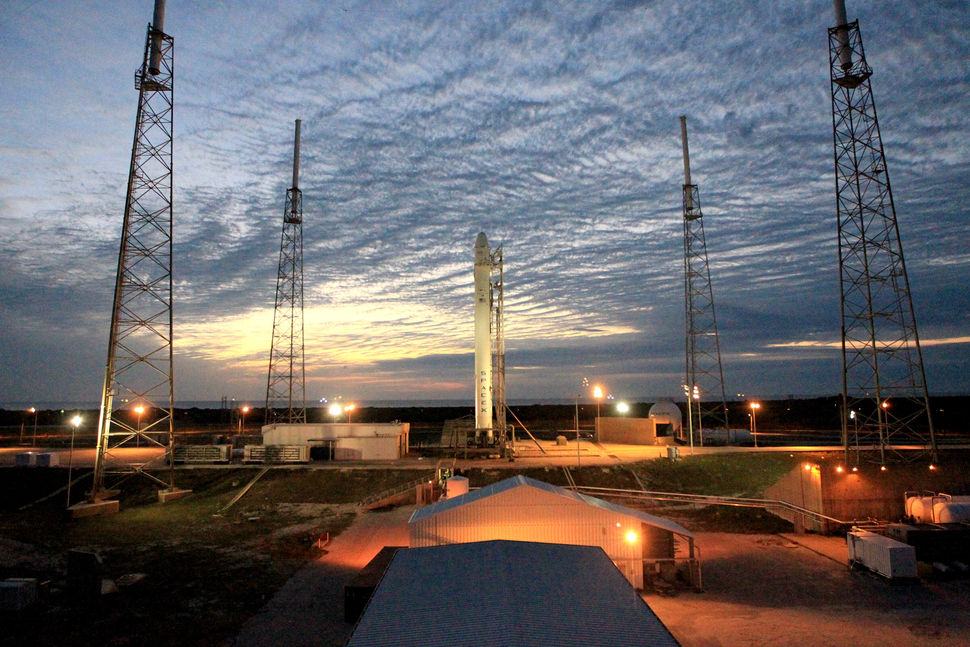
Watching the grainy footage makes it look older and you might be forgiven for thinking SpaceX’s Falcon 9 has been flying for many years longer than it actually has. But a decade ago, on 4 June 2010, the first of these remarkable boosters—which have delivered hundreds of missions into low-Earth orbit and beyond for the U.S. government, the scientific community and a multitude of commercial and international entities—took flight from Space Launch Complex (SLC)-40 at Cape Canaveral Air Force Station, Fla. And just a week ago, in perhaps the best “early” 10th birthday gift SpaceX could have hoped for, a brand-new Falcon 9 roared away from historic Pad 39A at the Kennedy Space Center (KSC), carrying a human crew into space aboard a U.S. spacecraft and from U.S. soil for the first time since the end of the Space Shuttle era.
All told, 86 “single-stick” Falcon 9s have risen from Earth in ten years, most recently on Wednesday night, when the record-setting B1049 core triumphantly wrapped up its fifth launch and became the first booster to successfully land a fifth time, as well as marking the East Coast debut of the “Just Read the Instructions” Autonomous Spaceport Drone Ship (ASDS), which previously pulled retrieval duties off the West Coast. Of those missions, we have seen 85 outright successes, one loss of vehicle—the in-flight destruction of the CRS-7 Dragon spacecraft, back in June 2015—and a partial failure to insert a secondary payload into orbit in October 2012. Another Falcon 9 booster was lost during pre-flight preparations in September 2016, destroying the Amos-6 communications satellite in a launch pad conflagration. All told, and when combined with three Falcon Heavy “triple-niner” missions between February 2018 and last June, this has yielded an impressive 97.8-percent success rate.
The Falcon 9’s first iteration, known as the “v1.0”, flew on five occasions between June 2010 and March 2013. Its evolution was aided substantially when NASA picked SpaceX as one of two Commercial Resupply Services (CRS) providers for the International Space Station (ISS) in December 2008. Hopes to launch the first flight in the 2008-2009 timeframe ultimately came to nothing, due in part to the complexity of the Falcon 9 system and the regulatory requirements for launching from Cape Canaveral. Engine tests occupied the SpaceX team throughout this period and full-duration firings of the Merlin 1C engines of the first and second stages were completed by early 2010.
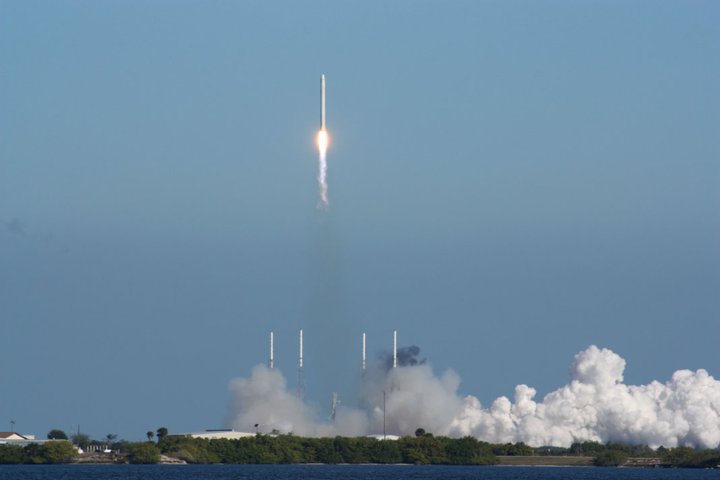
The first attempt to launch the maiden Falcon 9 at 1:30 p.m. EDT on 4 June was scrubbed due to an out-of-range sensor error on one of the first-stage engines. The countdown clock was recycled and the rocket sprang from SLC-40—a complex previously utilized by Titan vehicles between 1965 and 2005, before being leased to SpaceX by the Air Force in 2007—a little over an hour later at 2:45 p.m. EDT. The v1.0 was powered uphill by the 1.1 million pounds (503,000 kg) of thrust from its nine Merlin 1C engines, which were arranged in a rectangular, “3×3” configuration at the base of the first stage.
Despite suffering slight “rolling” shortly after liftoff, the Falcon 9 carried a “boilerplate” mockup of the Dragon cargo ship, which remained in orbit for three weeks, before re-entering the atmosphere in late June. Six months later, in December, a second Falcon 9 lofted Demo Flight-1 as part of its orbital demonstration of Dragon under the Commercial Orbital Transportation Services (COTS) contract with NASA. And in May 2012, on only its third flight, the booster made history by delivering a commercial cargo ship to the ISS for the first time.
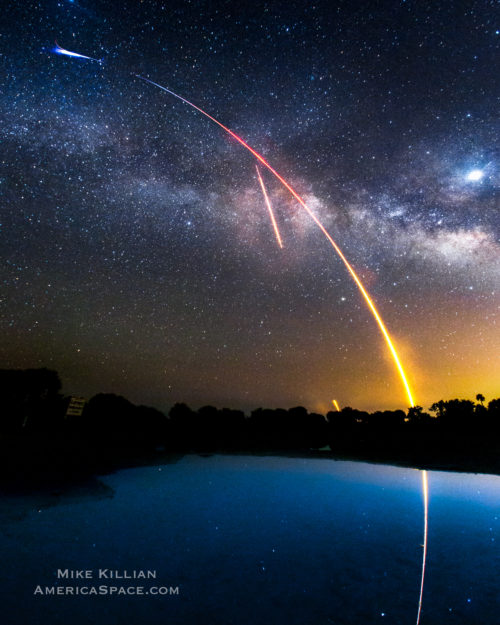
This laid the groundwork for a successful Commercial Resupply Services (CRS) partnership with NASA which launched 20 Dragon cargo ships between October 2012 and March 2020. Nineteen of those missions—excluding the CRS-7 failure in June 2015—delivered over 95,000 pounds (43,000 kg) of cargo to the space station and returned more than 76,000 pounds (34,400 kg) back to Earth.
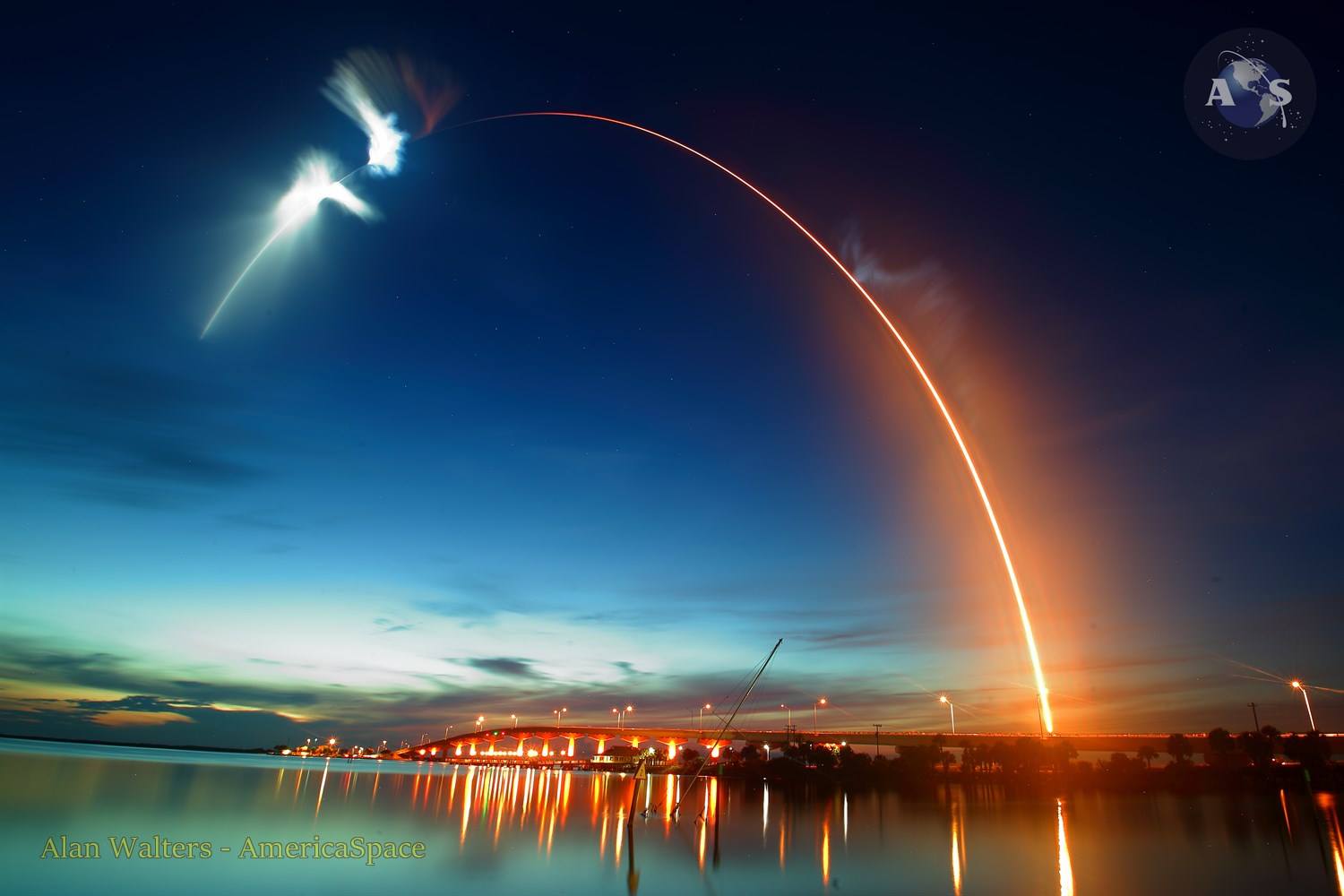
All told, the 157-foot-tall (48-meter) Falcon 9 v1.0 flew five times, successfully delivering each of its principal payloads to their requisite orbits. However, on its fourth launch in October 2012 a premature shutdown of one of its Merlin 1C engines produced a lower-than-intended orbit and resulted in the loss of a secondary payload.
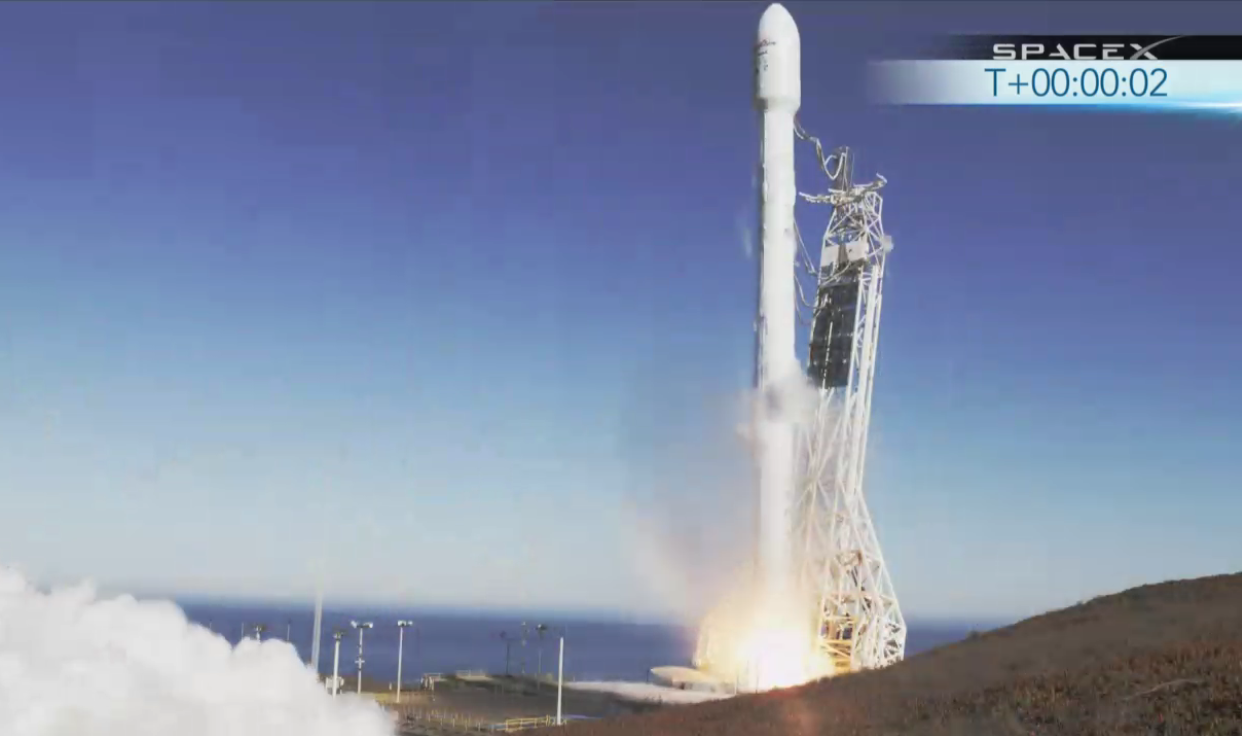
The second iteration, the Falcon 9 v1.1, made its first flight in September 2013 and began setting records from the outset, launching SpaceX’s inaugural mission out of Space Launch Complex (SLC)-4E at Vandenberg Air Force Base, Calif., and its first foray into polar orbit with Canada’s Cascade, SmallSat and Ionospheric Polar Explorer (CASSIOPE) research satellite. The v1.1 stood 224 feet (68 meters) tall, was 60 percent heavier than its predecessor, with larger propellant tankage and, thanks to its upgraded Merlin 1D engine suite, produced a 60-percent greater propulsive yield at liftoff, totaling some 1.3 million pounds (600,000 kg). The first stage was configured in an “octaweb” layout, with eight engines arranged in a circular pattern around a single center engine.
All told, the v1.1 flew 15 times between September 2013 and January 2016. Following its CASSIOPE mission, it launched its first payload to geostationary transfer orbit—the SES-8 communications satellite—in December 2013. It went on to loft a further six GTO-bound comsats, including the dual-satellite ABS-3A and Eutelsat 115 West B birds in March 2015. Additionally, it boosted five CRS Dragons toward the ISS, of which all but the final one succeeded. On the morning of 28 June 2015, a v1.1 was lost at 139 seconds after liftoff in the first in-flight loss-of-vehicle incident experienced by the Falcon 9. It later became clear that a strut securing a high-pressure helium bottle inside the second stage’s liquid oxygen tank had failed, causing an overpressurization event. Additionally, a v1.1 delivered NASA’s Deep Space Climate Observatory (DSCOVR) to the L1 Lagrange Point in February 2015 and in so doing executed SpaceX’s most distant mission to date, pushing its payload to a spot some 930,000 miles (1.5 million km) beyond Earth.
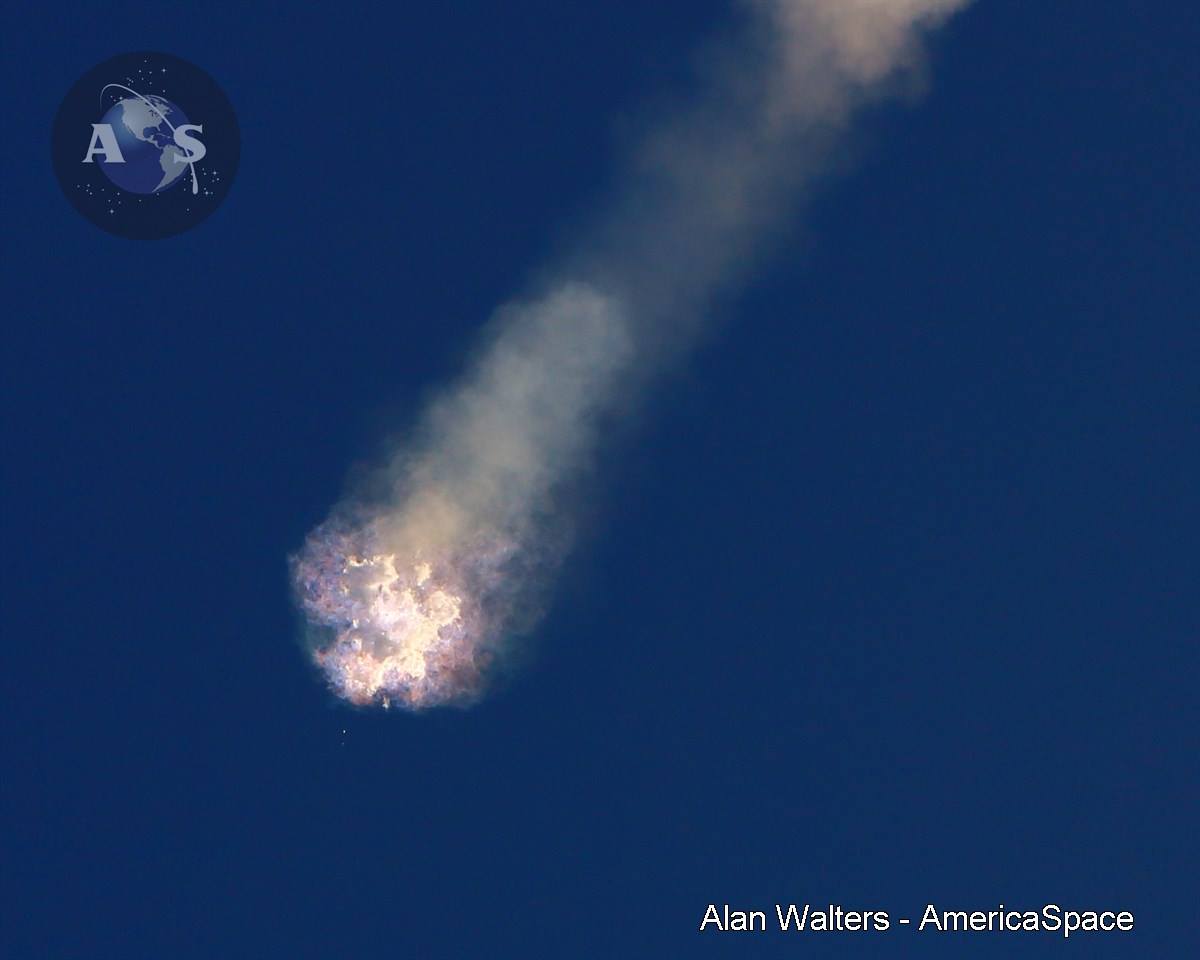
The final voyage of the v1.1 came a few weeks after the maiden flight of its successor, the “Full Thrust” Falcon 9, whose uprated Merlin 1D+ engine suite generated some 1.5 million pounds (690,000 kg) of thrust at liftoff. Standing 230 feet (70 meters) tall, the newest iteration of the booster incorporated gains in terms of structural enhancements to its airframe, a lengthened second stage and increased propellant tank volumes. Dependent upon whether its first stage would be expended or recovered, the full-thrust Falcon 9 could deliver up to 50,300 pounds (22,800 kg) to low-Earth orbit or up to 18,300 pounds (8,300 kg) to geostationary transfer orbit.

Right from the outset, SpaceX founder Elon Musk noted his intent for the Falcon 9 to be recoverable and reusable and several efforts to soft-land returning first stages in the ocean in a “controlled” fashion had been executed with some success between April 2014 and February 2015. However, attempts to land returning first stages on the deck of the Autonomous Spaceport Drone Ship (ASDS) proved elusive, at least for the Falcon 9 v1.1. A breakthrough which wowed the world in December 2015 was the successful “land” landing of the first full-thrust Falcon 9, which alighted smoothly on Landing Zone (LZ)-1 at the Cape after delivering 11 Orbcomm satellites to orbit.

The acute difficulty of bringing first stage cores back to Earth at high re-entry velocities and temperatures, then guiding them, via an intricate system of hypersonic grid-fins, deployable landing legs and a pinch of old-fashioned good fortune, was best summed up by Mr. Musk with the quip: “This is rocket science!” Controlled re-entries began with the first Falcon 9 v1.1 in September 2013 and by July of the following year landing legs had been successfully deployed to effect a controlled “touchdown” in the Atlantic. In January 2015, the first attempt to soft-land a booster on the ASDS resulted in a hard impact, whilst another the following April sustained excessive lateral velocity and toppled over on the deck of the drone ship, whilst a lockout collet on a landing leg in January 2016 put paid to the last chance for a Falcon 9 v1.1 to achieve an intact touchdown. The first successful ASDS landing finally took place in April 2016.
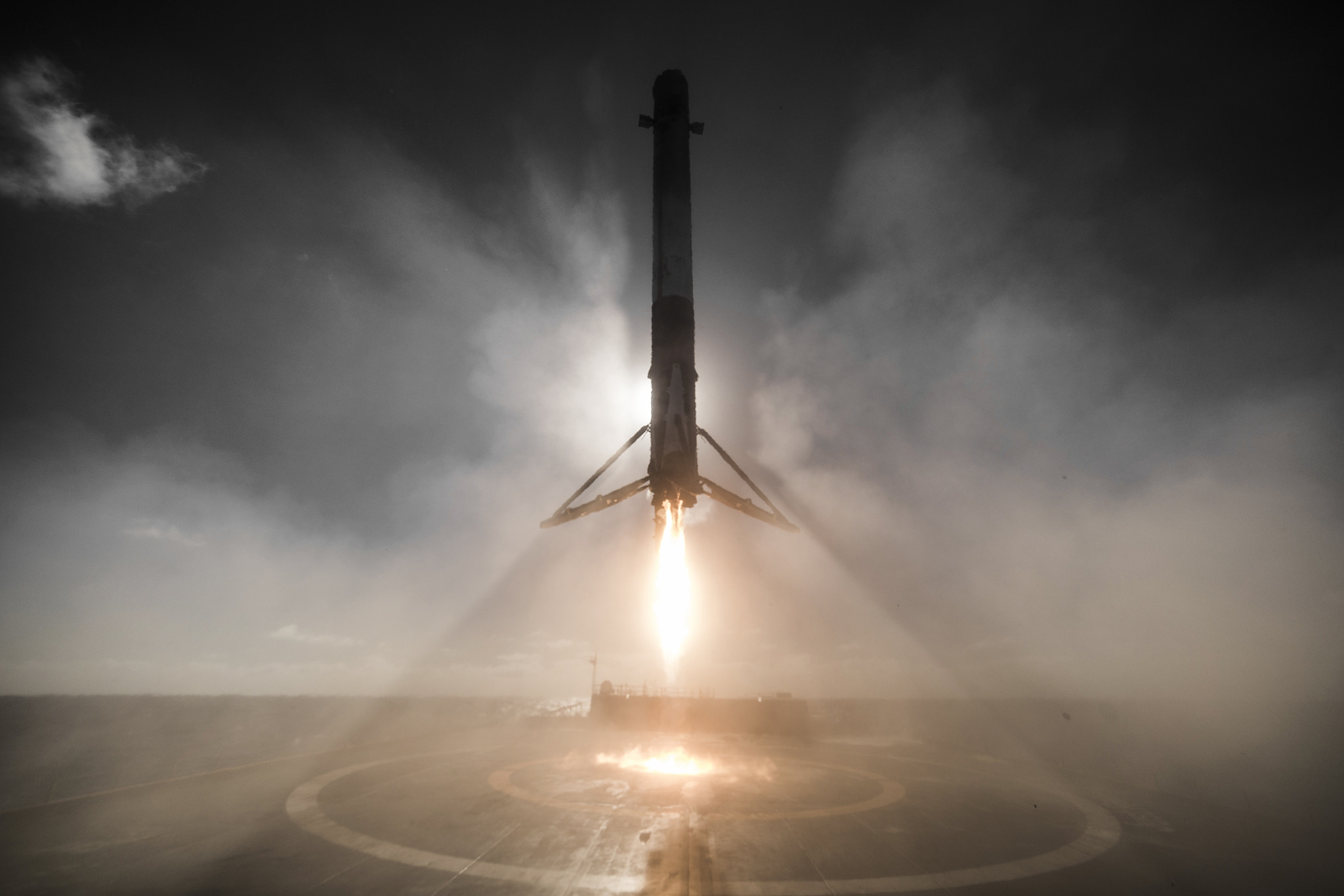
The current full-thrust Falcon 9 has proceeded through several versions of its own, with the maiden voyages of the Block 4 in August 2017 and the current Block 5 in May 2018. Incremental upgrades included a thrust increase, the incorporation of strengthened landing legs and improved reusability performance, as well as enhanced flight control systems. And as reported by AmericaSpace’s Mike Killian, the Block 5 ultimately certified to carry humans in NASA’s Commercial Crew Program. It launched its first two humans—NASA astronauts Doug Hurley and Bob Behnken—last weekend. More generally, the Block 5 was touted as being faster to refurbish and carried the possibility of flying multiple missions with the same booster core. And in a little more than three years, it has certainly delivered.
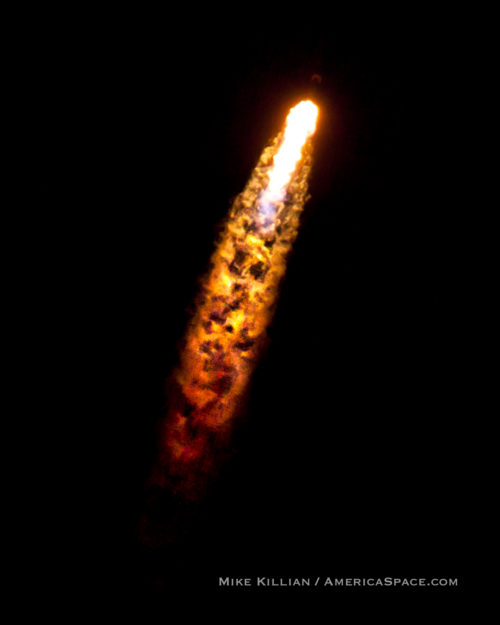
In March 2017, a core tailnumbered “B1021” marked SpaceX’s first reflight of a “used” orbital-class rocket and ushered in an era which, including the latest Starlink batch of satellites, has now seen 23 boosters fly twice, whilst six have flown three times, five have executed four missions and just two—the ultimately ill-fated B1048 in March and Wednesday’s B1049—have launched on five occasions. And as the system to recover them has matured, their ability to land on solid ground at the Cape or Vandenberg Air Force Base has increased to a level which has almost become “commonplace”. Nineteen “land” landings have been accomplished between December 2015 and March 2020, including the returning side-mounted boosters from all three Falcon Heavy missions. Added to that tally, 34 ASDS touchdowns have been achieved on the East and West Coasts of the United States. This includes landings on the ASDS vessels “Of Course I Still Love You” and “Just Read the Instructions” in the last few days alone.
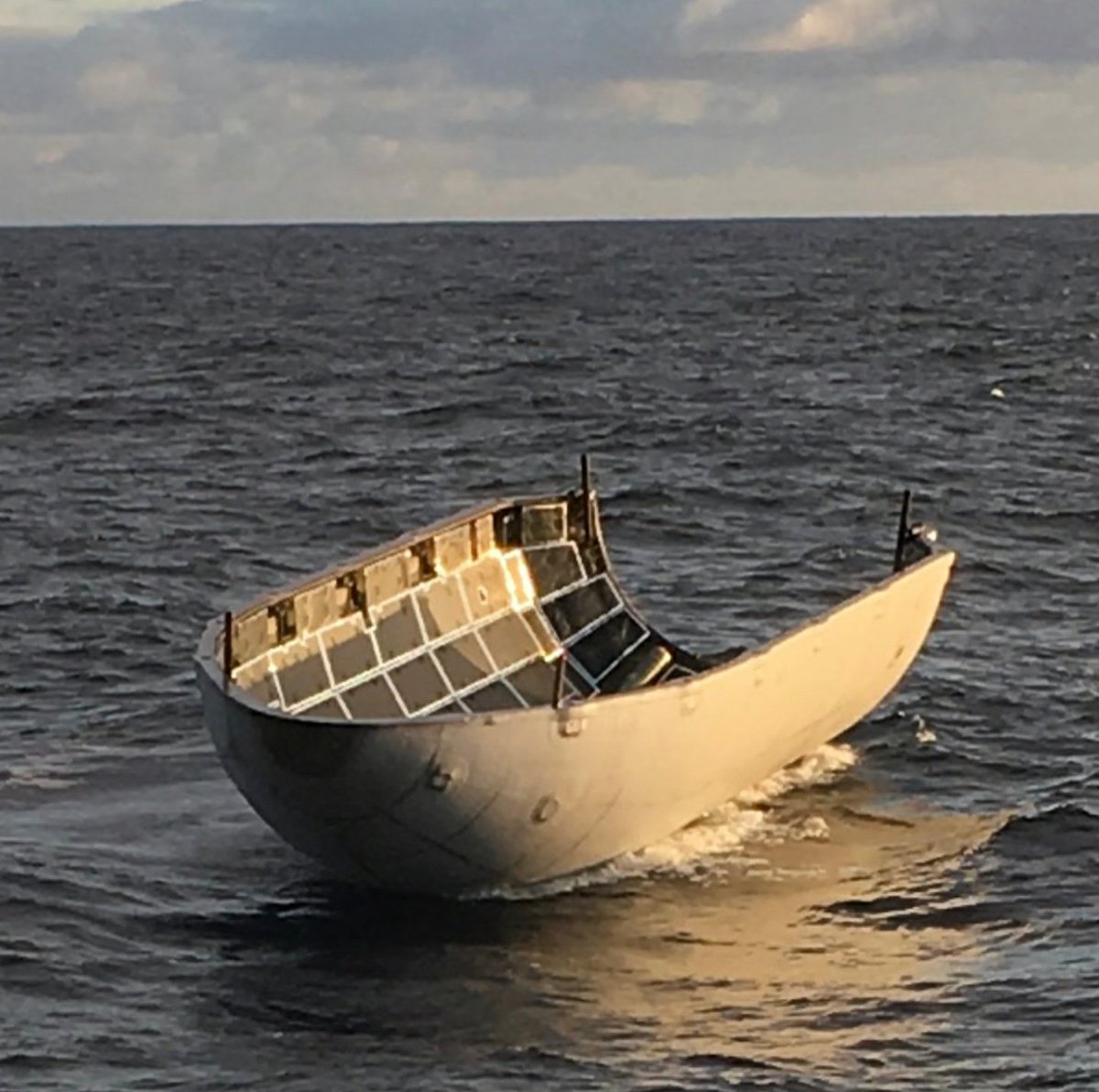
Reusability of the payload fairing “halves” has also met with steadily increasing levels of success. Since 2018, efforts to retrieve the fairings have been made with steerable parachutes and giant “catcher nets” aboard the SpaceX-chartered vessels “Ms. Tree” (previously called “Mr. Steven”) and “Ms. Chief”. Several early attempts to catch the descending fairings achieved “close-but-no-cigar” outcomes, but in June 2019 one fairing half was successfully recovered following the third Falcon Heavy launch. More recent attempts have met with mixed success. One half was captured following the Amos-17 launch last August and another was grabbed after a Starlink flight in January. And only last November, B1048 launched with two reused fairing halves for the first time, flying again after their Falcon Heavy debut.
In late April 2020, the Falcon 9 completed its 84th mission, eclipsing the United Launch Alliance (ULA) Atlas V as the most-flown operational U.S. booster. And with another Starlink flight provisionally penciled-in for mid-June and the third Block III Global Positioning System (GPS) satellite at month’s end, SpaceX shows no sign of slowing down in a packed 2020 manifest. The first Post-Certification Mission (PCM-1) of Crew Dragon—carrying Crew-1 astronauts Mike Hopkins, Victor Glover and Shannon Walker of NASA, together with Japan Aerospace Exploration Agency (JAXA) veteran Soichi Noguchi—is also expected to head towards the ISS as soon as 30 August.
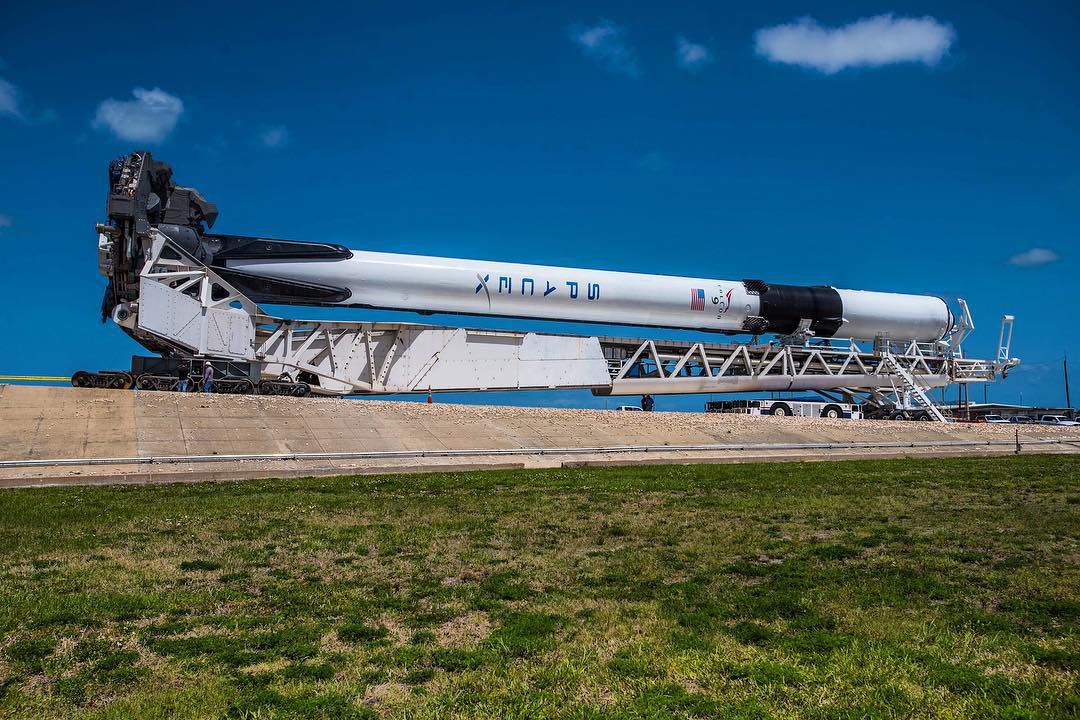
In ten years, the Falcon 9 has evolved dramatically as a launch vehicle. Its payload capacity to low-Earth orbit has more than doubled, its capacity to geostationary altitude has almost done the same, and incremental successes juxtaposed with several near-misses have allowed it to cement its credentials as a versatile rocket capable of repeat launches, oceanic and ground landings, fairing reuse and even the reuse of Dragon capsules.
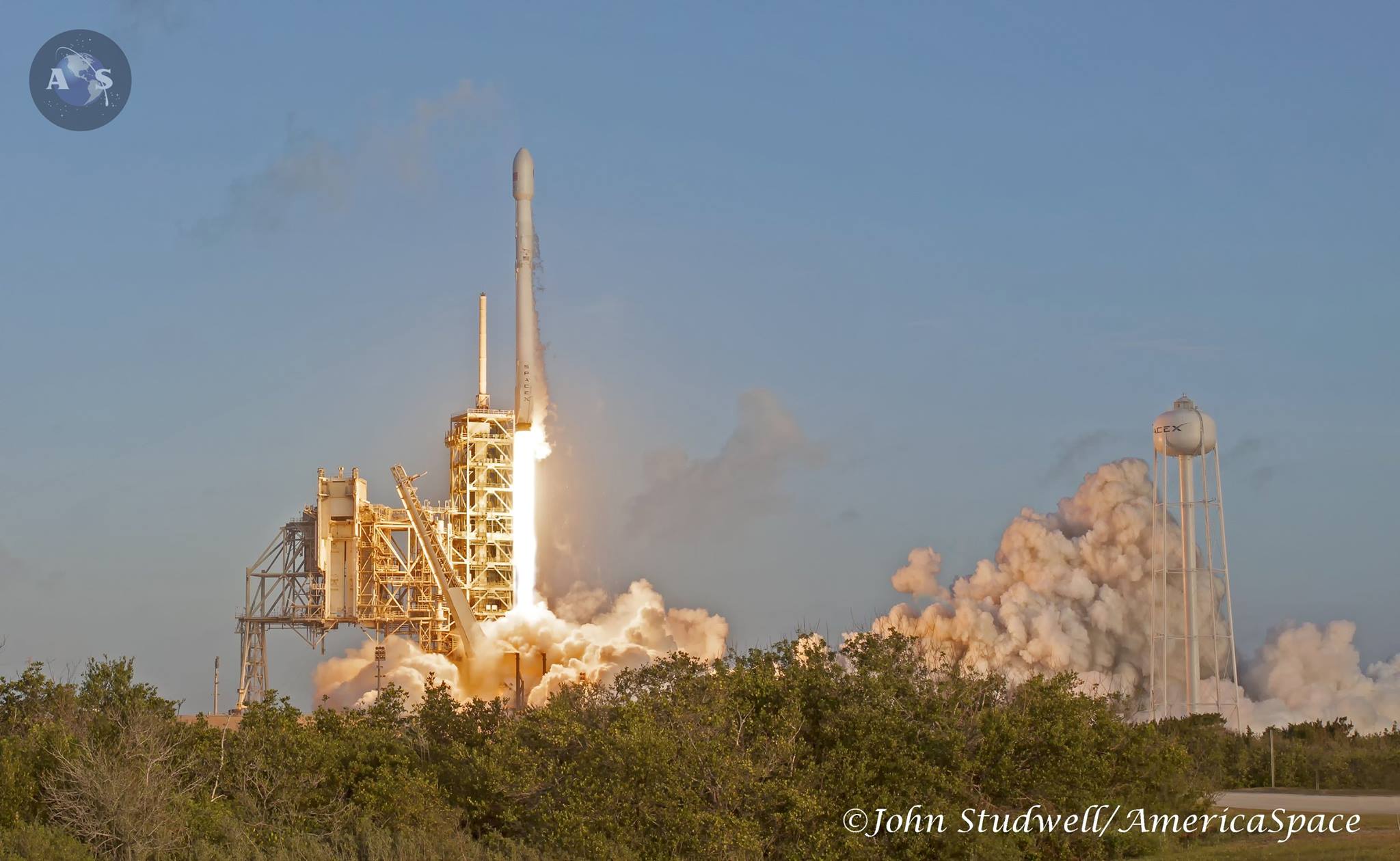
Thirty-two large communications satellite have been boosted to GTO, together with 75 Iridium NEXT birds and no fewer than 480 (and counting) of SpaceX’s home-grown Starlinks. Four major Earth observation missions—the joint NASA/NOAA Jason-3, Taiwan’s Formosat-5, Argentina’s SAOCOM-1A and most recently Canada’s Radarsat Constellation Mission (RCM)—have flown, as well as the Transiting Exoplanet Survey Satellite (TESS) and Israel’s ill-fated Beresheet lunar lander to explore the furthest and closest worlds to us. SpaceX’s classified national security customers have included NROL-76 for the National Reconnaissance Office, the X-37B mini-shuttle and the highly secretive Zuma mission, whose purpose and exact status came into some doubt within days of its January 2018 launch.
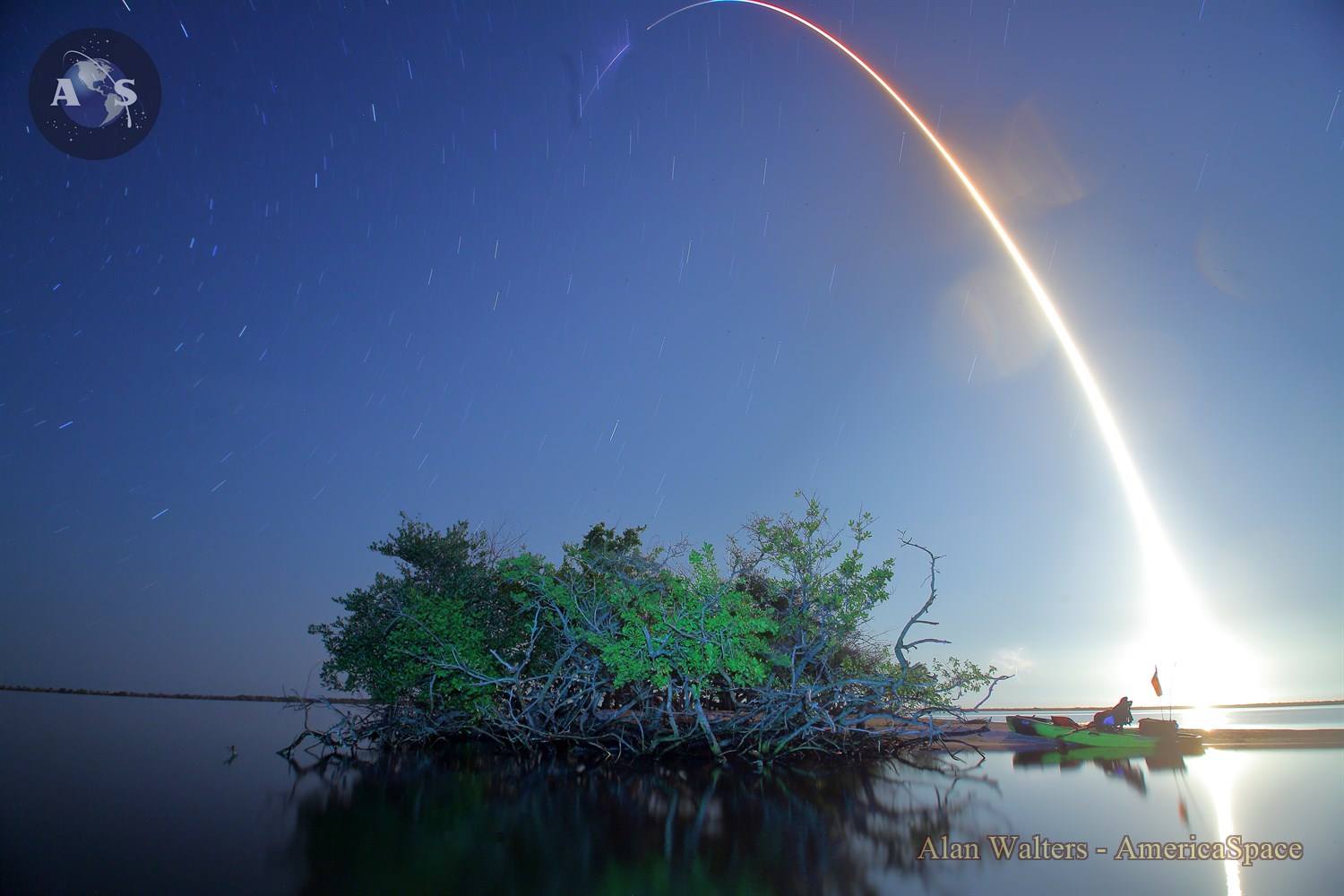
Added to the list of “single-stick” Falcon 9s, of course, are the first three voyages of the Falcon Heavy triple-niner and the first tentative steps of Commercial Crew: the long-awaited Demo-1 mission in March 2019, the dramatic In-Flight Abort Test last January—the first Falcon 9 never intended to achieve orbit—and the triumphant voyage of Doug Hurley and Bob Behnken a few days ago. Its launch rate, too, is increasing. It took the Falcon 9 over six years to achieve its 25th flight in 2016, but went on to hit the magical 50 only two years later in 2018, then passed 75 late last fall. With nine launches completed in the first half of 2020 alone, it can be expected that the Falcon 9 may pass the magical 100th flight at some stage within the few months. And its future, like that of the ferocious bird from which it draws its name and inspiration, looks set to soar.




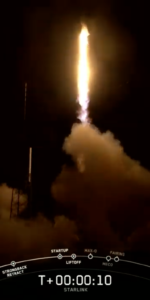
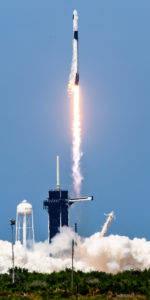
Amazing machine. ULA could have done this, had they wanted to.
Publicly traded companies just don’t innovate.